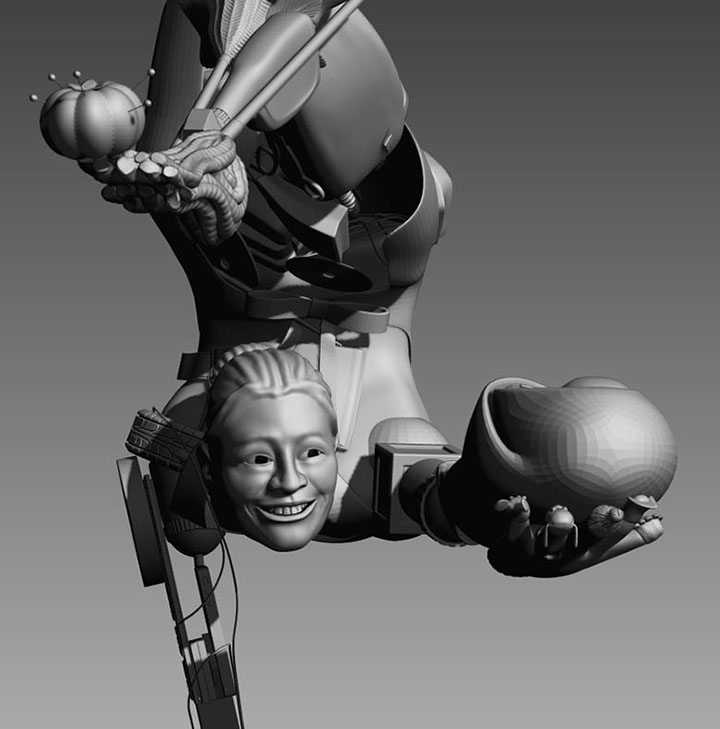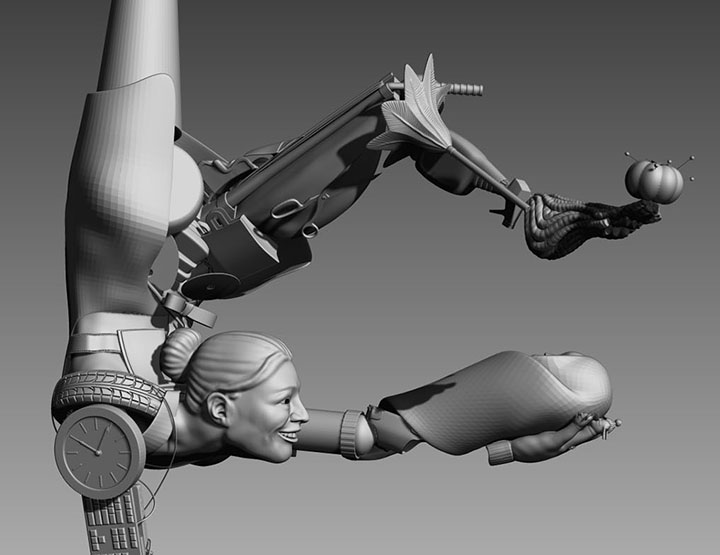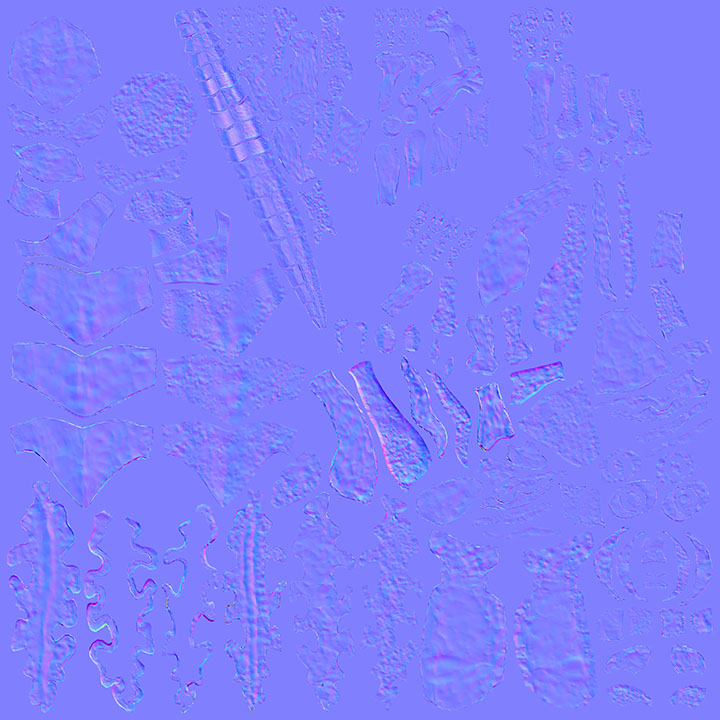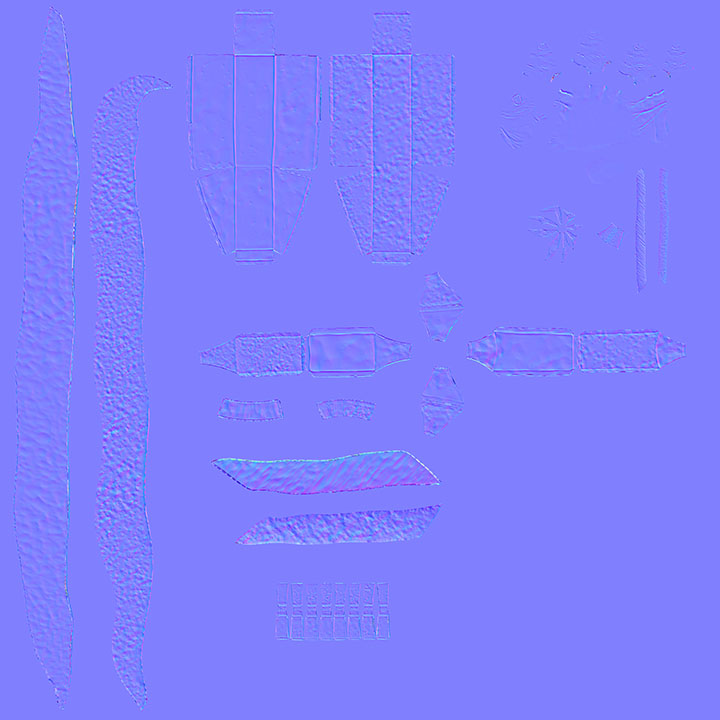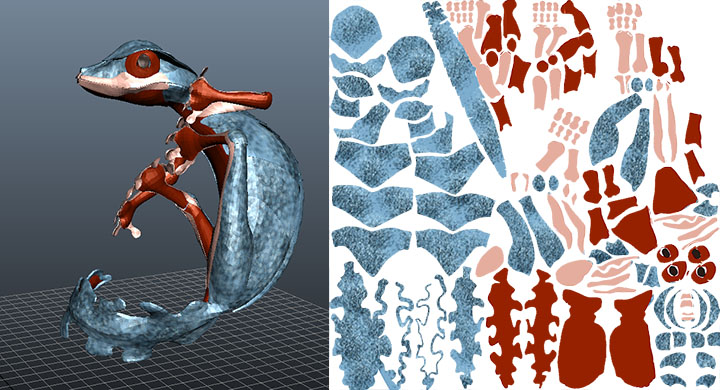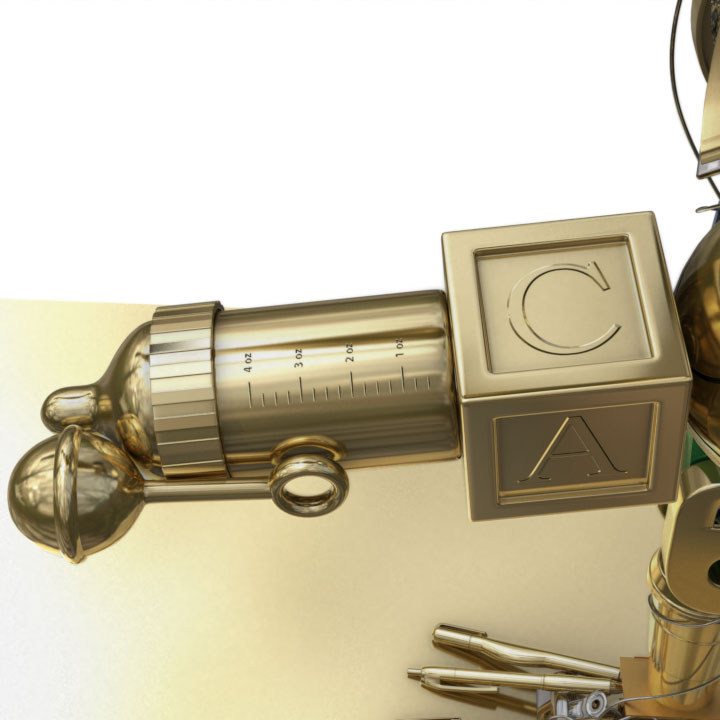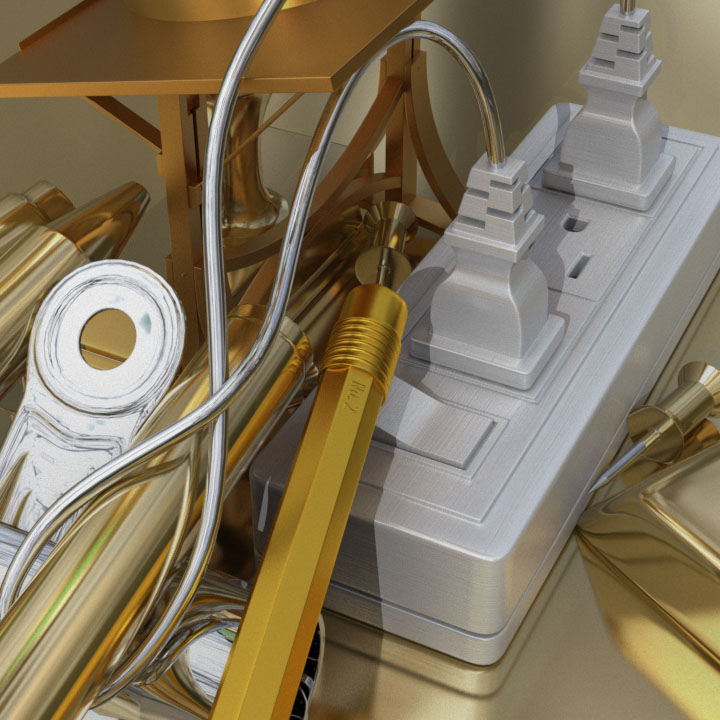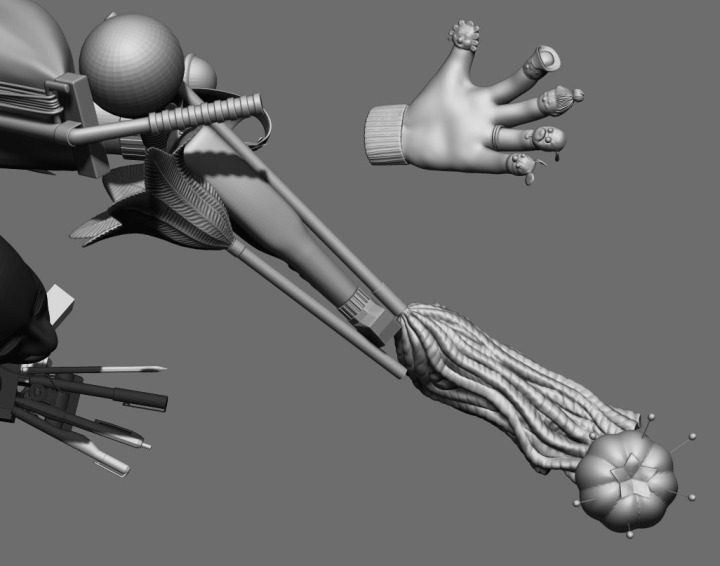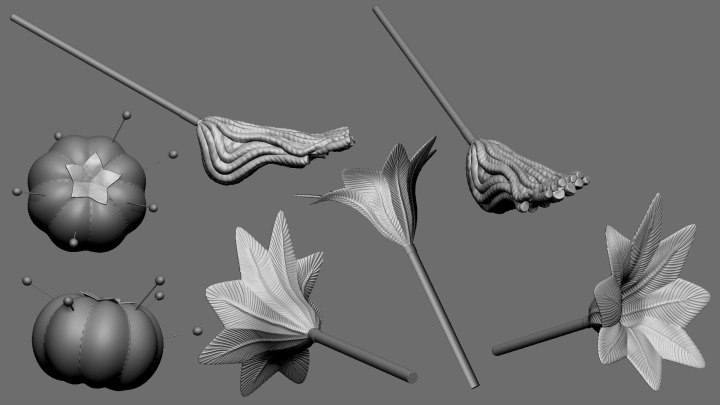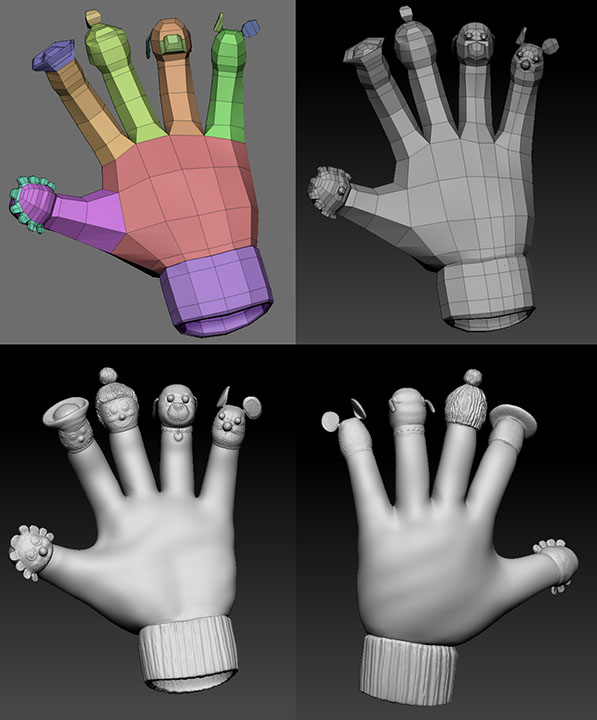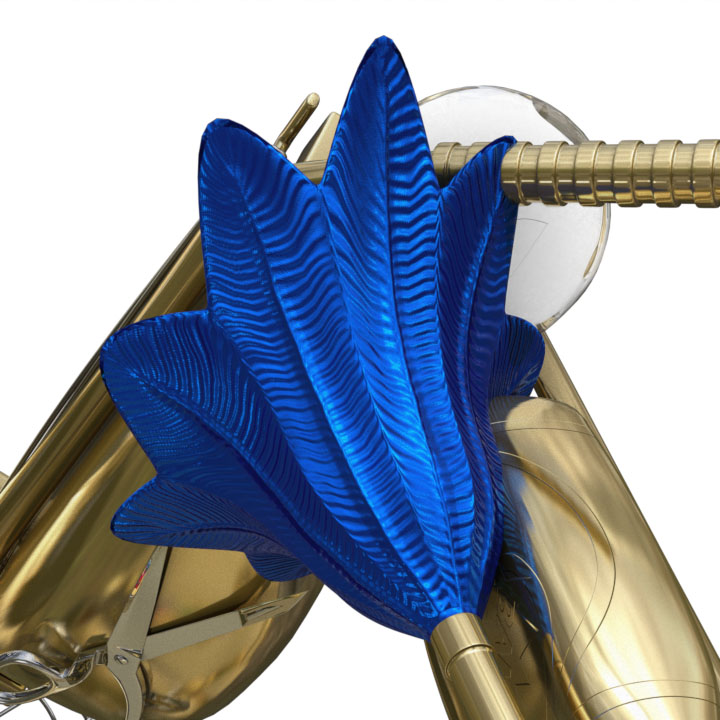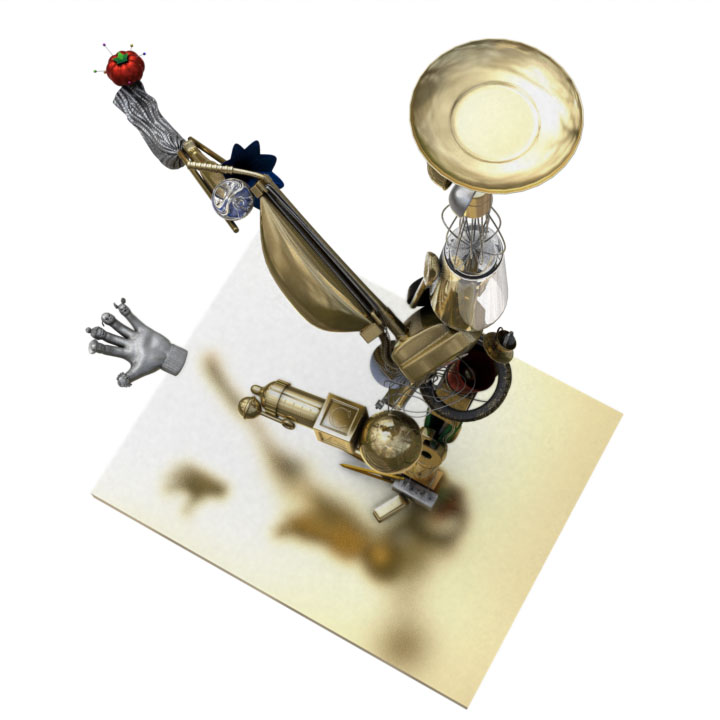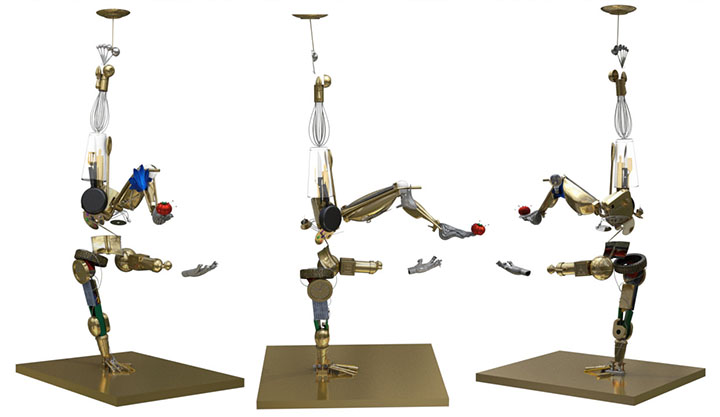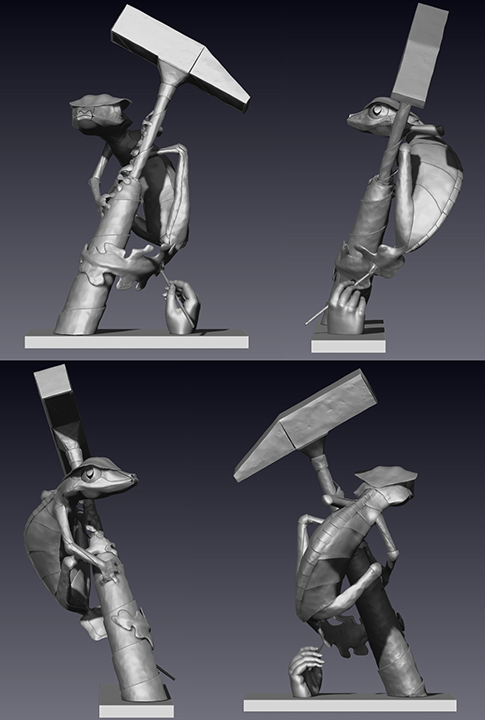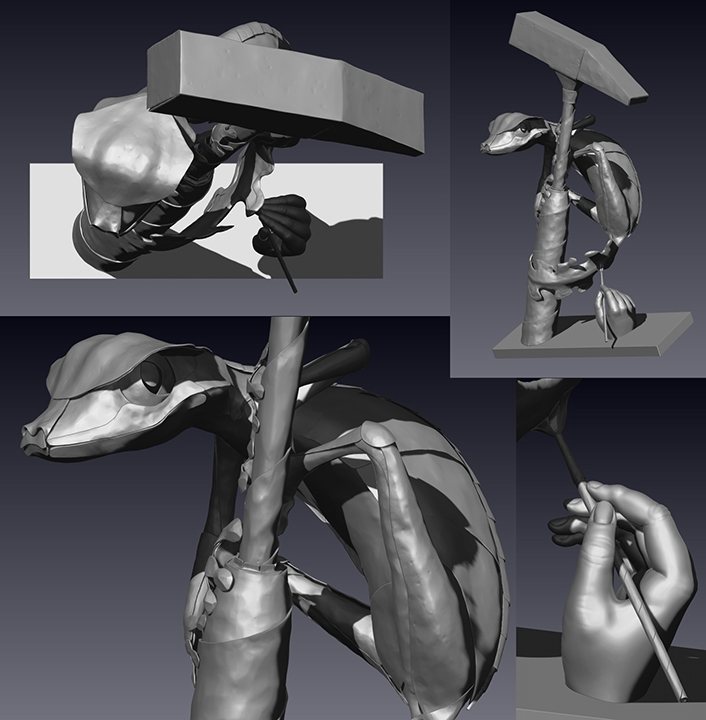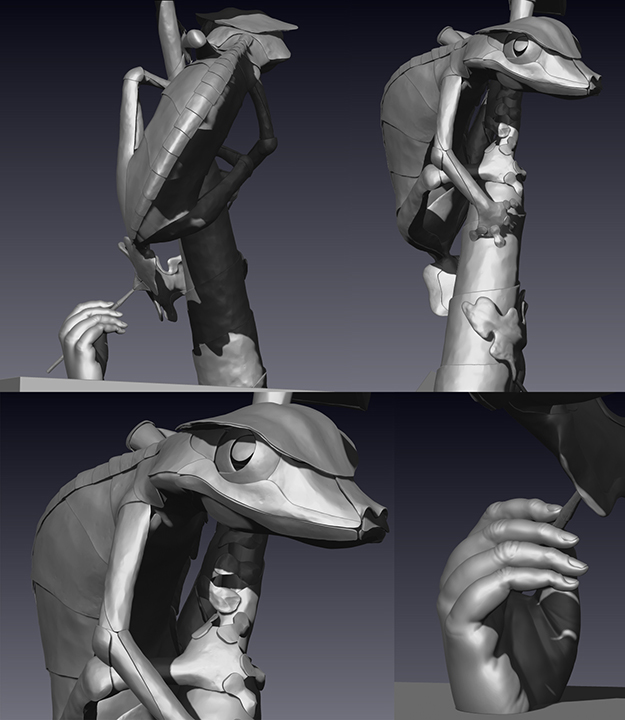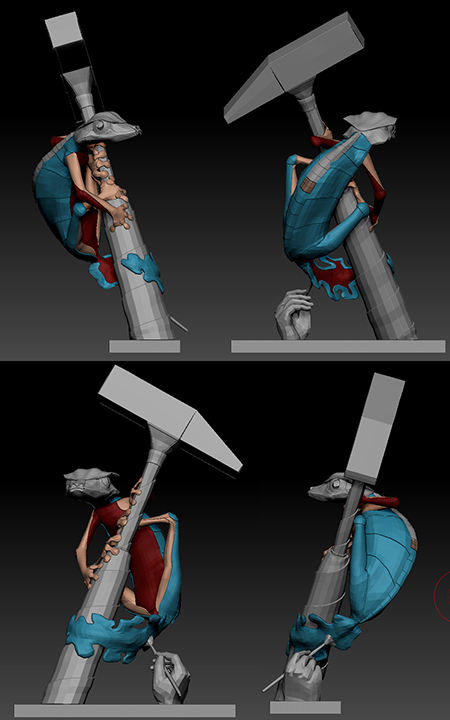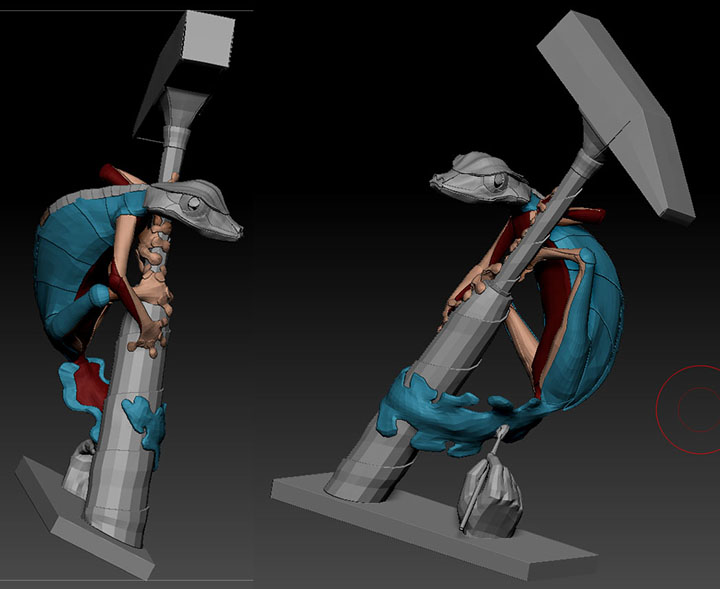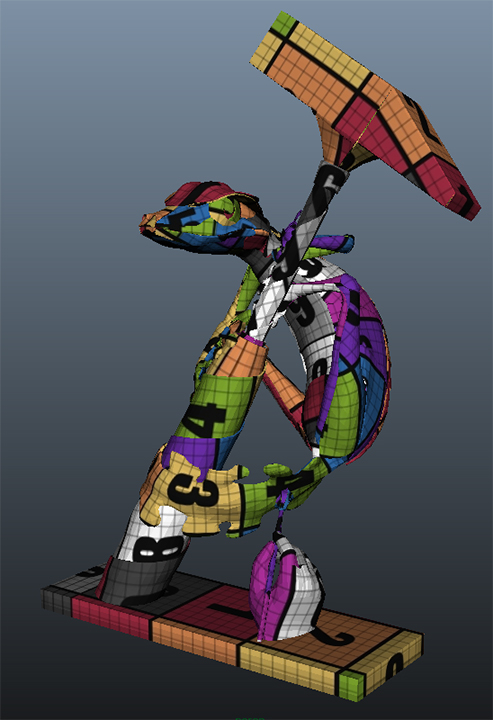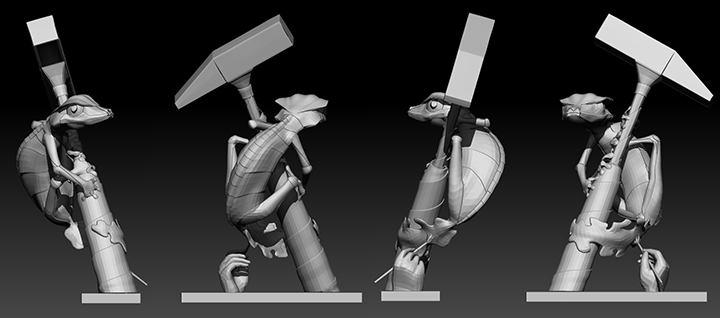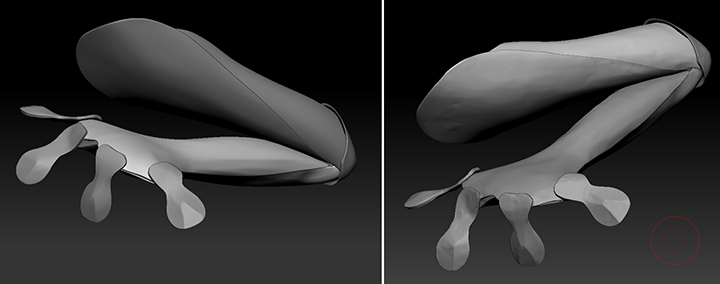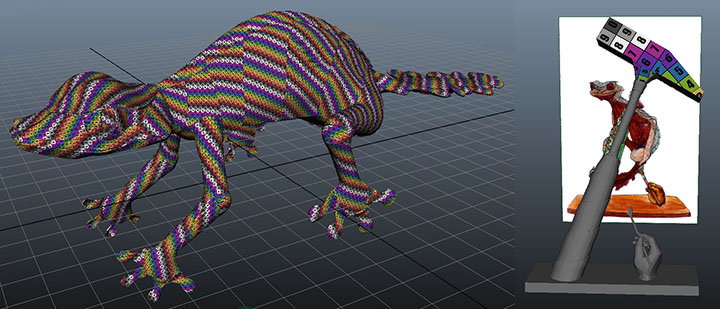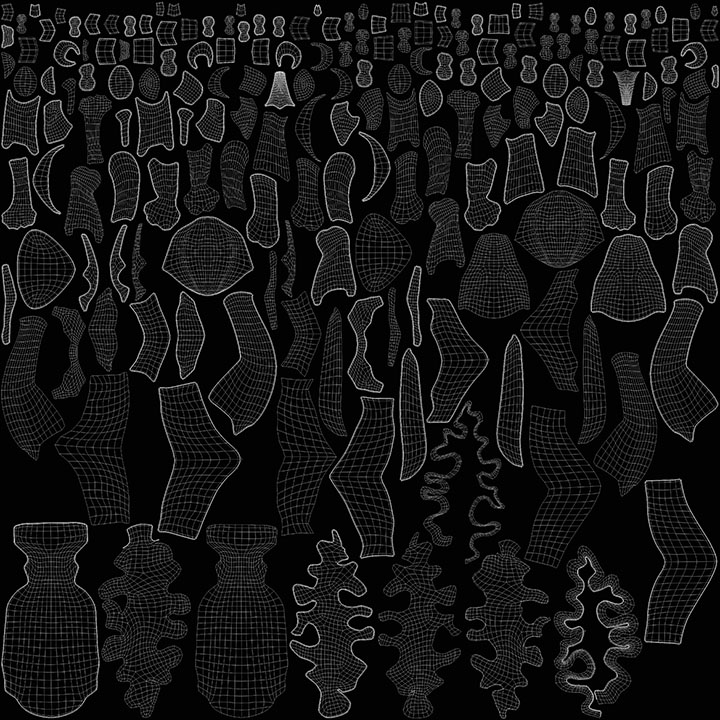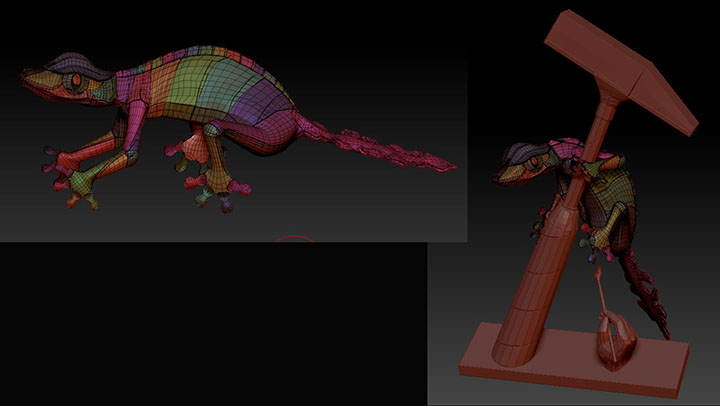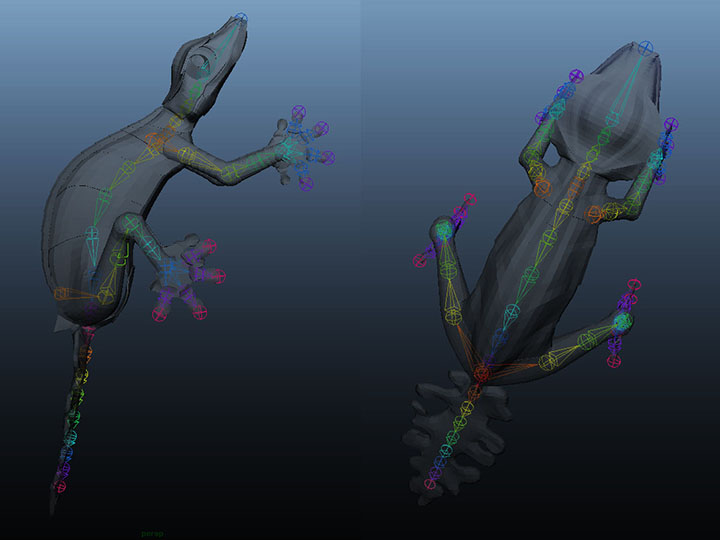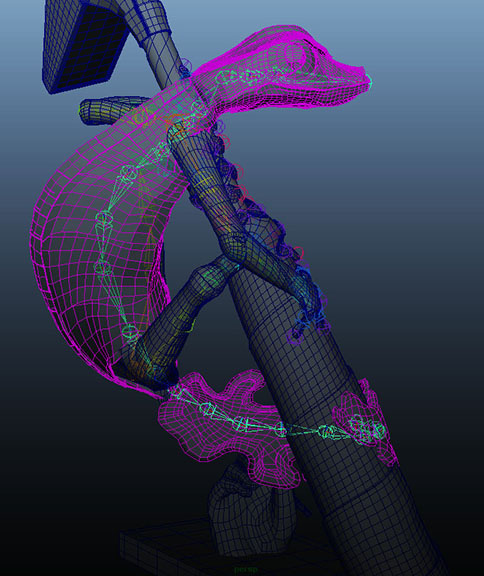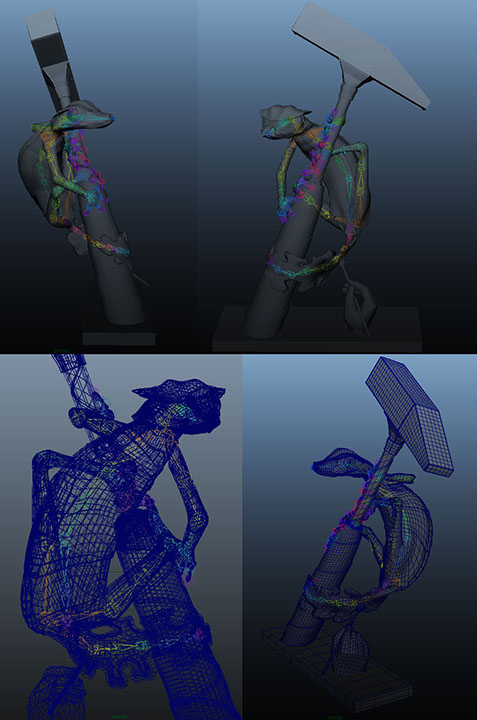Directed Study - Session 15
My Group Directed Study session on Tuesday was my last class for the summer semester. In fact, I'm posting this blog entry early because I'm going on vacation soon. (Yay!) I feel that it will be necessary to continue working a bit during my vacation, but I don't believe that it will be necessary to concern myself with keeping up these blog entries during that time, as most of the work that I will be doing won't be visually impressive anyway. I plan to use the time to bake normal maps and UV anything that I previously neglected, etc. I won't be doing any ZBrush work because I'll be using my laptop, which doesn't handle ZBrush nearly as well as my desktop PC. So everything I do will be in either Maya, Modo, or Photoshop.
Before I get to my vacation, however, I do have a bit of progress to show on the sculpting of my Juggler:


You may have noticed that these two collages show two different babies. The first image is the first bit of work that I did that I brought into my GDS class on Tuesday. I was pretty happy with it, but not entirely confident that it was truly baby-ish. I hadn't done any real work on the baby's hand or elbow yet in that set of images: just the face. The comments that I got on it seemed to concur that it wasn't really quite there yet. My instructor pointed out that some features were too defined for a baby. One of my classmates suggested widening the forehead. I think there was a consensus that it needed to be a bit more pudgy all around.
So, I went back to the drawing board and came up with the baby in collage #2. The baby in this image has been changed quite a bit from the first one: the hand is refined, the elbow is refined and resized, the blanket has been refined quite a bit more than in the first image (though it still has quite a bit of work still in need of doing on it), and, of course, the face has been changed. I started out by softening all of the features, which changed the expression and made it much more vague. I think that it looks a bit more authentically "baby", but I'm not sure that I like it any better than the first baby. I think that this rendition of the baby lost the character that the first incarnation possessed. The first one seems to me to be something like a caricature of a baby, while the second one is a bit closer to looking like the real thing. It's possible that I like the caricature better. I like the personality that first baby had: something was certainly making him happy. I'm really not sure what the new one's feeling. I wanted it to retain the happiness of the first in the second, but I really couldn't get that to work while softening the features enough to look more like the images of the newborns that I was able to find for reference online. I think that my main problem is that newborns don't actually have much expression in the real world. The images that I was copying from were either of babies asleep or in the middle of half of a yawn or just making shapes with their mouths. There's no real expression to their faces yet at that age, and I don't really want to look at older references since my baby is still in swaddling and I intend to keep it that way.
I'm thinking that my next step is to find a middle ground. I'm going to try tweaking the new baby face to give it a happier and sillier expression. If it ends up getting defined again while making the changes then I may just say "so be it" and run with it. It's a sculpture. It's not supposed to be a real baby. It's a sculpture of a baby. As long as it comes across as "baby" I think I'm fine. It's not like when I was sculpting the Gecko's hand, which was supposed to be a metal object cast from the artist's actual hand. There's no way to cast a mold of a baby. It would have to be someone's interpretation, and since I want the sculpture to have a bit of a sense of whimsy to it, I think that a baby caricature will be just fine.
I'm going to try to keep moving forward rather than just reverting back to the first baby face that I created. There are good things about the second head: it just needs more expression. I'll work with it more tomorrow before I leave for my vacation and hopefully leave it at a point that I'm happier with than I am now.
If all goes as planned, I should have a lot of good work to show in three or four weeks when I get back to posting after my vacation. I can't wait to show my progress then.
